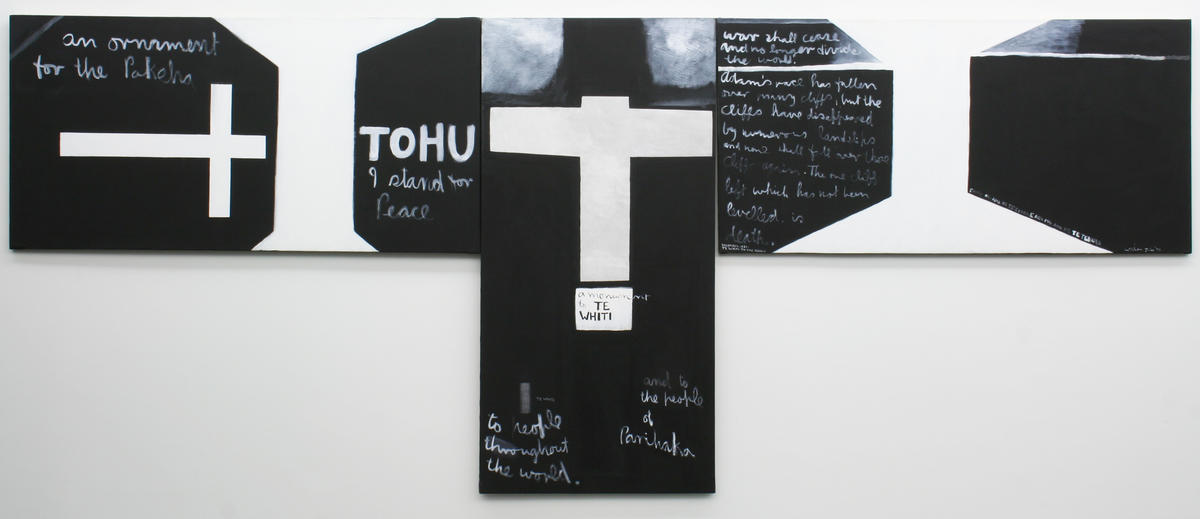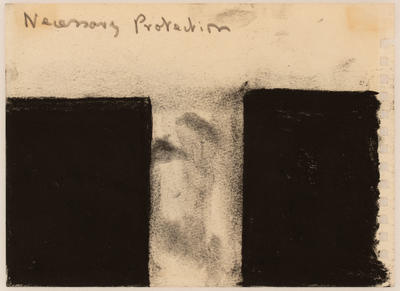Parihaka triptych
-
Colin McCahon
b.1919
d.1987

Title
Parihaka triptych
Details
| Production Date | 1972 |
|---|---|
| Collection(s) | Gift of the artist, 1973. Held by the Govett-Brewster Art Gallery for the people of Parihaka. He tākoha nā te ringatoi, 1973. E tautiaki ana te whare whakairi toi o Govett-Brewster mā te iwi o Parihaka. |
| Accession Number | 73/15 |
| Media | Acrylic on canvas |
| Measurements | 1754 x 4370 mm |
About
Colin McCahon’s Parihaka Triptych is a response to one of the most shameful episodes in New Zealand’s colonial history — the 1881 invasion and destruction of the peaceful Māori settlement of Parihaka by government militia. Two rangatira, Te Whiti o Rongomai and Tohu Kākahi, established Parihaka as a site of non-violent resistance to government land confiscations in Taranaki. A popular movement emerged at Parihaka based around Te Whiti and Tohu’s teachings, which combined a vast reservoir of traditional Māori knowledge with insights gleaned from Christianity. McCahon’s compelling painting is a monument to the two men, painted to honour their legacy, vision and spiritual authority.
McCahon used the cross as the dominant motif of his stark composition, visualising the teacher-prophets Te Whiti and Tohu as messiahs who stood to lead their people to salvation. The three canvases which form the Triptych take the shape of the tau cross, or Old Testament cross. The horizontal and vertical thrusts of this cross emblem also feed into a system of dual, or opposing, forces in McCahon’s painting, reflecting the clash of cultures and the opposition of pacificism and violence in the Parihaka story. This dualism can also be seen in the austere palette. Areas of dense, funereal black are offset by a bright white, which calls to mind the albatross feather that is a symbol of Parihaka, or in McCahon’s words, “sky and light falling into a dark landscape”.
McCahon gifted the Parihaka Triptych to the people of Parihaka, and it is held in trust by the Govett-Brewster Art Gallery. Inscribed with both English and Māori text, it addresses Māori and Pākehā audiences, concluding with the hope that Te Whiti and Tohu’s legacy may live on. “Einga [Hinga] atu ana he tetekura. E ara mai ana he tetekura” (When one chief falls, another rises to take his place).

